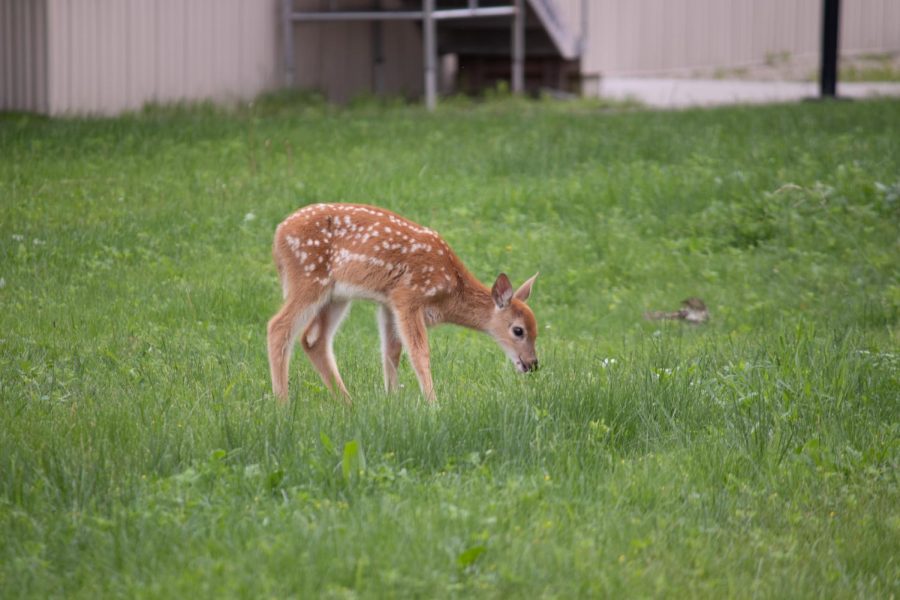Unprotected wildlife on campus threatened by prospective development
Though OU’s Biological Preserves are protected, there are other natural areas on campus that are not, including wetlands and forests that some wildlife call home.
Oakland University’s Biological Preserves enclose 110 acres of protected natural land that is used for research and educational purposes. It’s highly regarded and has been conserved by the university for decades, but why are there other natural areas that remain unprotected on campus?
What is currently protected?
The Biological Preserves contain the Western Preserve and the Eastern Preserve, which are open to the research community as well as any person who wants to utilize the land for recreation.
The blue, wavy lines on this map encompass the areas that the Western and Eastern Preserves lay within. However, the areas that remain outside of those lines contain many similarly thriving ecosystems that are used for the same purposes as the preserves, yet they could also be utilized for development.
Who is fighting for this?
Scott Tiegs, an associate professor in the Department of Biological Sciences at OU whose focus area is in human impacts on aquatic life, is involved in the conservation of the Biological Preserves. However, he has recently become focused on drawing attention to the land on campus that may be available for future development because of its lack of special protection.
“There’s lots and lots of other natural areas on campus that don’t enjoy those same protections,” Tiegs said. “Those are the ones that OU could easily sell off a piece of land for a new ‘Quicky Mart’ or a new parking lot or something like that.”
As many consider the Biological Preserves to be an excellent tool for the biology community and the general community alike, Tiegs discussed his passion for preserving the natural land at OU, which could face future destruction.
“One thing I try to do is just make people aware of the fact that we have these other natural areas on campus,” Tiegs said. “We have vernal pools, wetland, forests, etc. And, that we use these a lot for research and teaching.”
Mary Jamieson is an assistant professor in the Department of Biological Sciences at OU who mainly focuses on understanding plant-insect interactions. In regard to unprotected natural areas on campus, she suggested letting grass remain uncut to create prairie pockets and leaving this land and other areas undeveloped to protect the biodiversity of OU.
“The best thing we can do as a community is to try to protect some of this land in an area that is very rapidly being developed,” Jamieson said.
Why should OU protect this land?
There are many implications that developing these natural ecosystems into urban expanses is threatening to not only the life that inhabits these areas, but to the human community as well.
“Urban development has been linked to many environmental problems, including air pollution, water pollution, and loss of wildlife habitat,” said JunJie Wu from the Agricultural and Applied Economics Association. “Urban runoff often contains nutrients, sediment and toxic contaminants, and can cause not only water pollution but also large variation in stream flow and temperatures. Habitat destruction, fragmentation and alteration associated with urban development have been identified as the leading causes of biodiversity decline and species extinctions.”
Water pollution, air pollution and loss of wildlife could negatively affect not only the research and recreational use of the natural land, but it could pose a risk to the community of the university.
However, an article published by OU titled “Current Environmental Initiatives at Oakland University” concluded with this message in regard to unprotected natural land on campus:
“Clearly, Oakland University must manage its own resources well,” Simon Ren and Donna Folland wrote. “But it also needs to be a guiding force in the region, by setting examples of stewardship and conservation and by preparing the next generation of leaders in environmental stewardship.”







